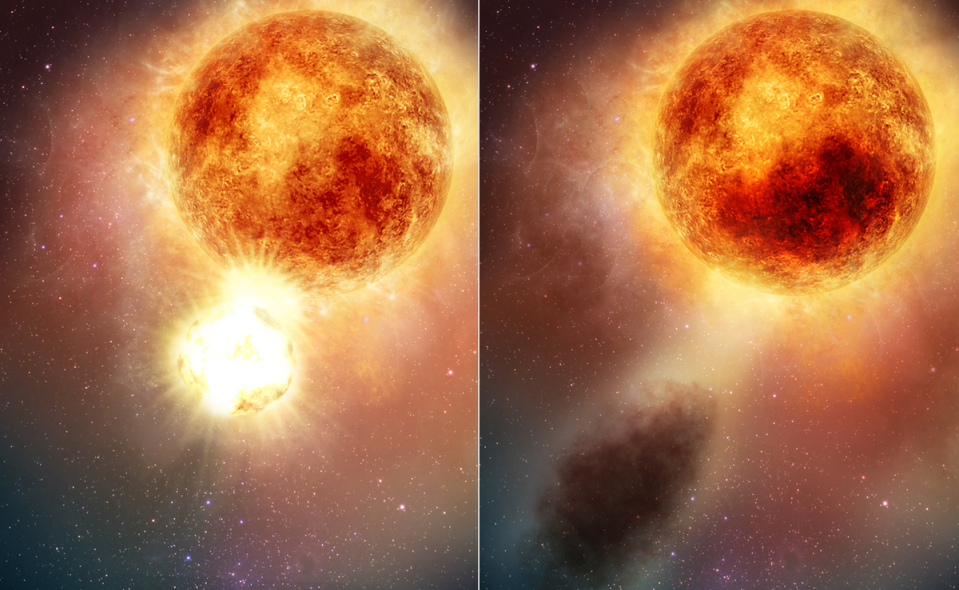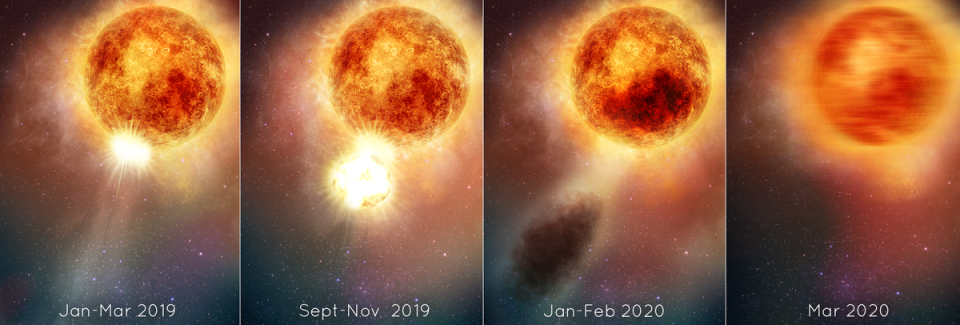Bizarre explosion tears through ‘Betelgeuse’ star leaving scientists confused

Scientists say they still “don’t completely understand” what happened to the star Betelgeuse, one of the brightest in the night sky.
The star has been behaving strangely for years, after it got darker and led to suspicions that it might be about to explode into supernova.
But instead something perhaps even more unusual is happening to the star: it is recovering from its dramatic explosion and is now “sort of bouncing”, according to scientists who have been tracking it.
That is the conclusion of scientists who have been using data from the Hubble Space Telescope and other equipment to observe the star, its explosion and the after effects.
Scientists have been fascinated by Betelgeuse for centuries: it is one of the brightest stars in our night sky, and they have been watching the regular rhythm of its pulses for some 200 years.
But, in 2019, it began to behave differently. Scientists suspect that it literally exploded, producing a huge surface mass ejection or SME.
That is a similar process to the coronal mass ejections or CME’s that are regularly thrown out of our own Sun. But the explosion on Betelgeuse was some 400 times more powerful, and in many ways unprecedented.
“We’ve never before seen a huge mass ejection of the surface of a star,” said Andrea Dupree of the Center for Astrophysics, who has been collating information on the star.
We are left with something going on that we don’t completely understand. It’s a totally new phenomenon that we can observe directly and resolve surface details with Hubble. We’re watching stellar evolution in real time.”
The outburst may have happened after a plume bubbled up deep inside the star, eventually stretching million miles across Betelgeuse. It then blasted off a large part of the star itself, leaving behind a cool surface area and dust cloud that meant it dimmed in the night sky.
That explains the visible changes in brightness that happened in late 2019 and went on for months.

Betelgeuse still appears to be recovering from the event. The 400-day pulsation rate that has been tracked by scientists for 200 years is gone, and the star itself is bouncing as it reforms.
Scientists are still working to tell the story both of its explosions and their fallout. But they might get some help from the James Webb Space Telescope, which might be able to watch as the ejected material moves into space and away from the star.

 Yahoo Finance
Yahoo Finance 